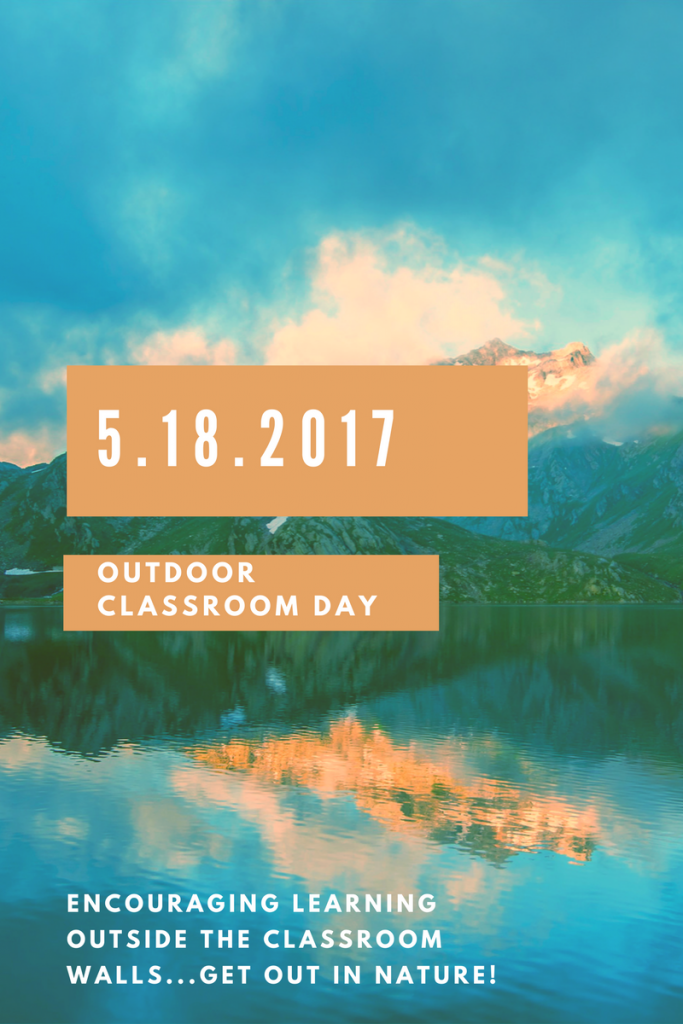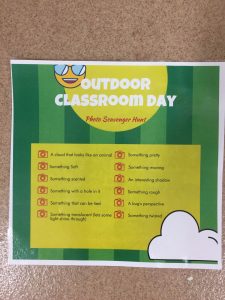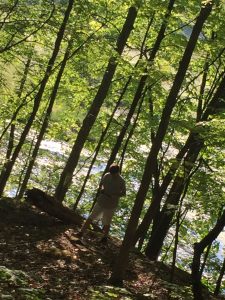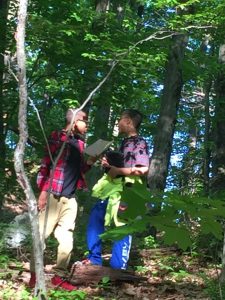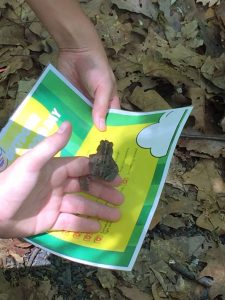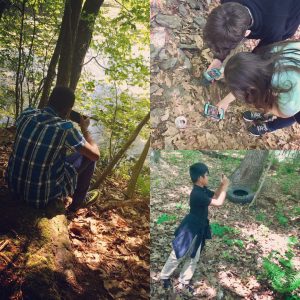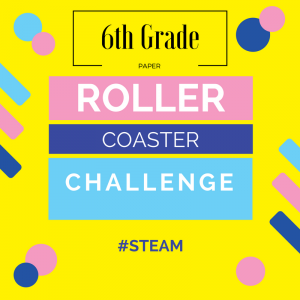
I FINALLY DID IT!
My 6th grade students have embarked on their first official “STEAM” based studio project in the art room. The challenge? They need to construct a “paper roller coaster” that allows a marble to travel along the track in one continuous motion. The students are working in small groups on this collaborative sculpture and are treating the project as a business venture. It’s pretty exciting to see everything unfold!

FIRST WE BLOG!
We have started using Kidblog, https://kidblog.org, to practice writing in the art room and reinforce ELA goals. This site is a super-student friendly site to use with students that allows teachers to control the privacy of posts and encourage digital etiquette skills in a supervised setting. It provides a venue for students to take pictures and write about their art and works well with Google Drive, which our students use on a daily basis.
We kicked off the lesson by doing some roller coaster research and blogging in Kidblog. Students were to write an “informational blog post” on what they considered to be “the coolest roller coaster in the world” and incorporate specific facts about the selected roller coaster in their post. They personalized their blog by changing up the background and adding a personal “voice” to their writing by sharing why they selected that particular roller coaster. This writing assignment also provided an opportunity to teach digital literacy skills and remind students about copyright guidelines. Many students learned that they could not just “copy and paste” the text into their blog without crediting the source.
NEXT WE PLAN OUR DESIGNS!
Students were placed in groups by randomly distributing colored squares of paper. After the students got passed their immediate disappointment that they weren’t choosing their groups, they realized they’d be working on something fun and it probably wouldn’t matter.
Students shared the features they liked from their roller coaster blogs (some even read and commented on their peers’ posts!) and this enabled students to develop a plan for their roller coasters. Students got right to work on developing a “blueprint” for their designs. Some even used online design programs for their plan!
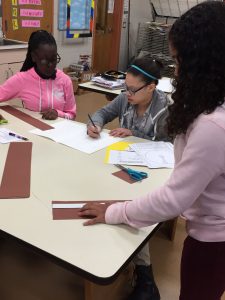

TIME TO BUILD!
Students were eager to start building once their design plans were complete. I gave a brief demonstration on scoring cardboard for neater folds, how to use a circular shape to create a funnel and how to make straight and curved tracks. Other than that, I reminded students they had templates and access to their Chromebooks for tips and techniques. I found the students were excited to just try manipulating the paper and cardboard and learning through trial and error. That was a “win” for me, as part of the STEAM approach to education is learning through discovery and experimentation.
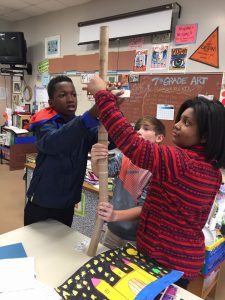


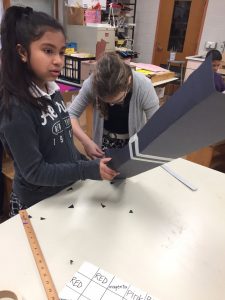
RUNNING THE BUSINESS END!
My smART partner developed a “monetary system” for making students accountable for materials in her art room. The amount of waste that students create, whether it is paper, paint, or lately the “Fab Lab” materials, has been quite frustrating. I knew that I wanted my students to treat the Roller Coaster Challenge as a business, so I decided to give this “money exchange” a try.
I gave each group 10 “Mrs. Shemansky Art Bucks” to purchase materials and supplies that would help them build their coaster. The items “for sale” would definitely be a big help, but they weren’t necessary. Students also had access to “free supplies” such as poster board scraps of less popular colors (great way to get rid of brown poster board!), scrap paper and old worksheets since we have gone digital and large sheets of manilla paper that have been accumulating dust in our supply closet.
Students were encouraged to bring items that could be used from home such as paper towel tubes, paper plates, bowls and cups, as well as items such as duct tape to enhance their structure. This allowed students to “save” money if they brought things from home. It has been a lot of fun listening to the students debate what is worth purchasing and how some groups are determined to spend as little of their budget as possible. Students are also wasting less and willing to be creative with many “upcycled” items.
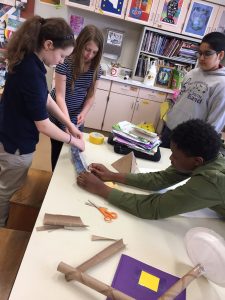
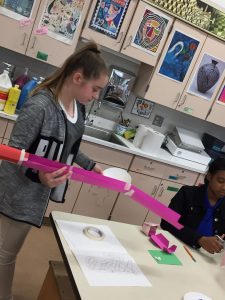
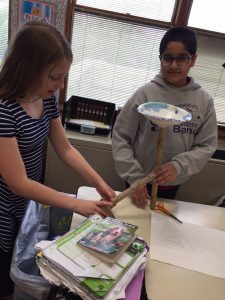
SO FAR, SO GOOD!
While I was very nervous to undertake this STEAM project, I knew I had to take a risk and give it a shot. So far, I think it’s been quite a hit! One exciting part of the project has been watching the students that thought it would never work find success. I have students that insisted it would be impossible to get a marble to complete a “paper loop” come back during their free periods, determined to make it work—and it did!
While my classroom is BURSTING at the seams with tracks, funnels and large coaster constructions and I am giving up my prep period to allow students to come to the art room to continue to work, the excitement of the students is contagious. I am enjoying being an observer, rather than the leader. The students are truly engaged with one another and working collaboratively on a goal. It really is a win-win! However, the biggest reward so far is the radiating pride on their faces when their track works.
While we still have a few weeks of construction left, I am excited to share their progress so far. Keep checking back for updates and the final products. I am sure this will become a memorable experience in 6th grade art!

